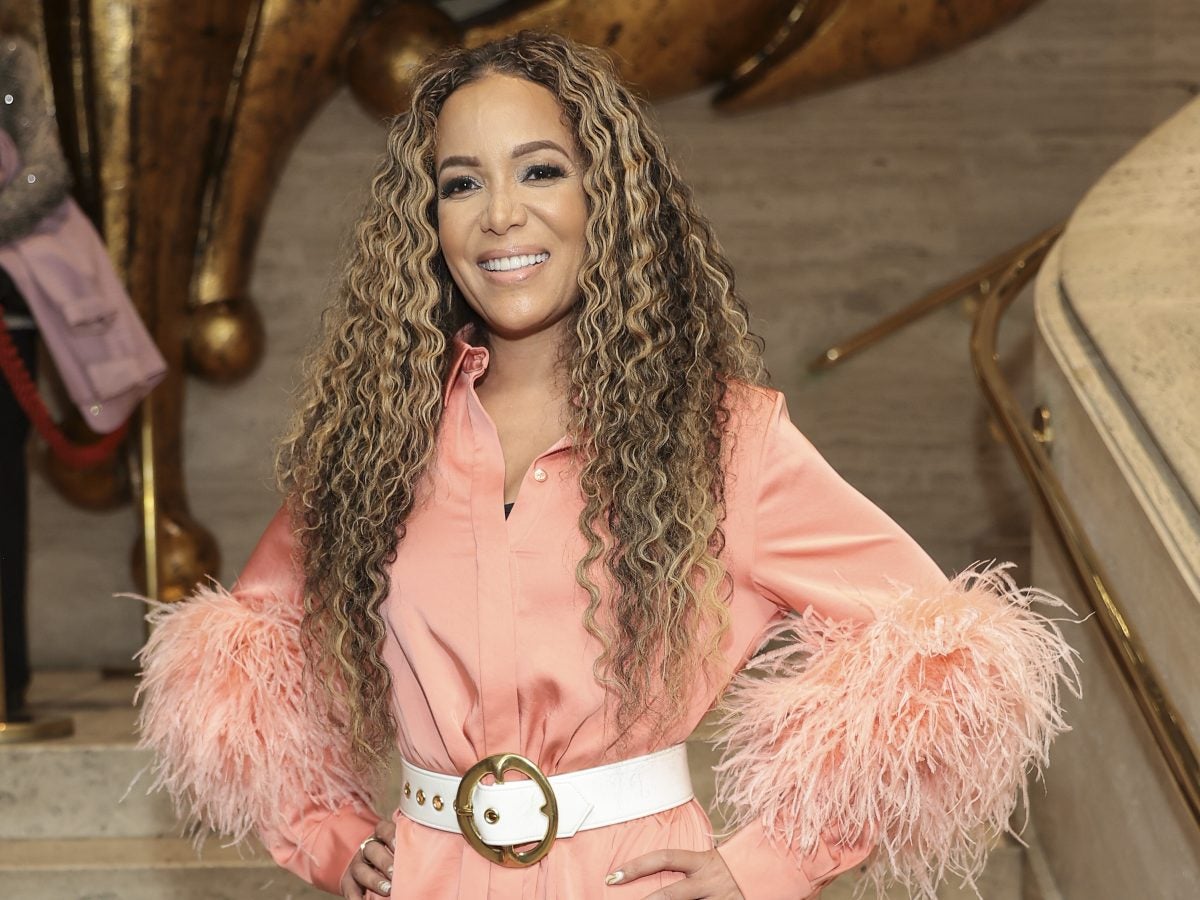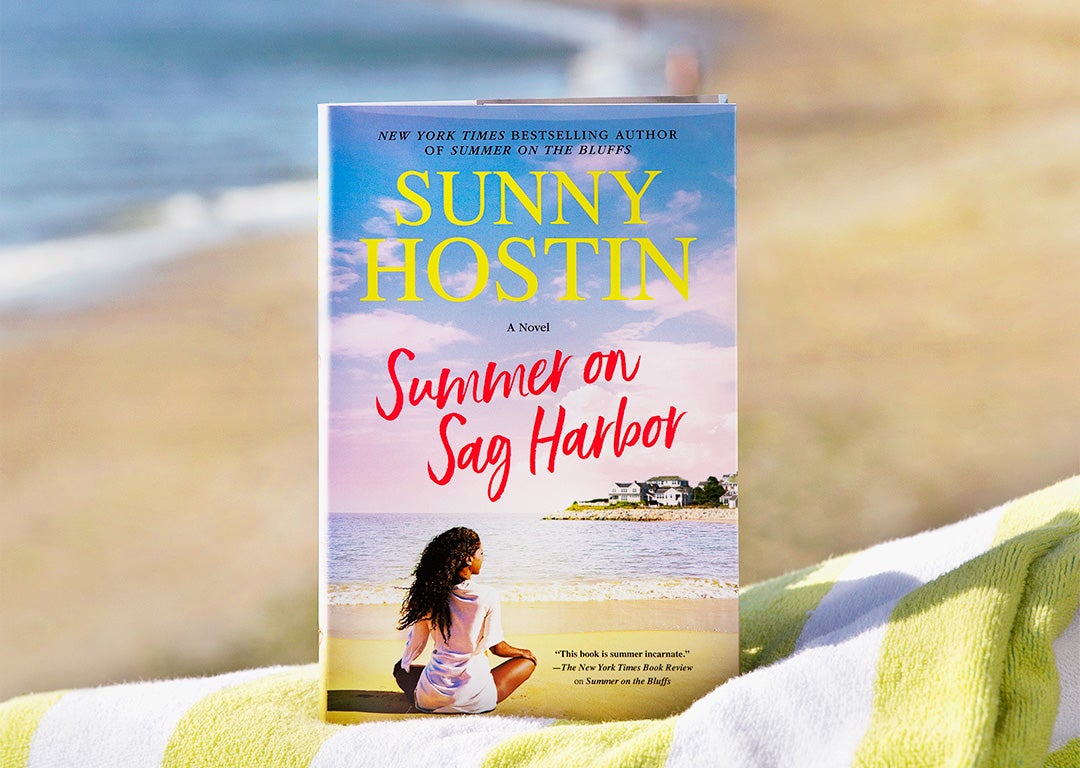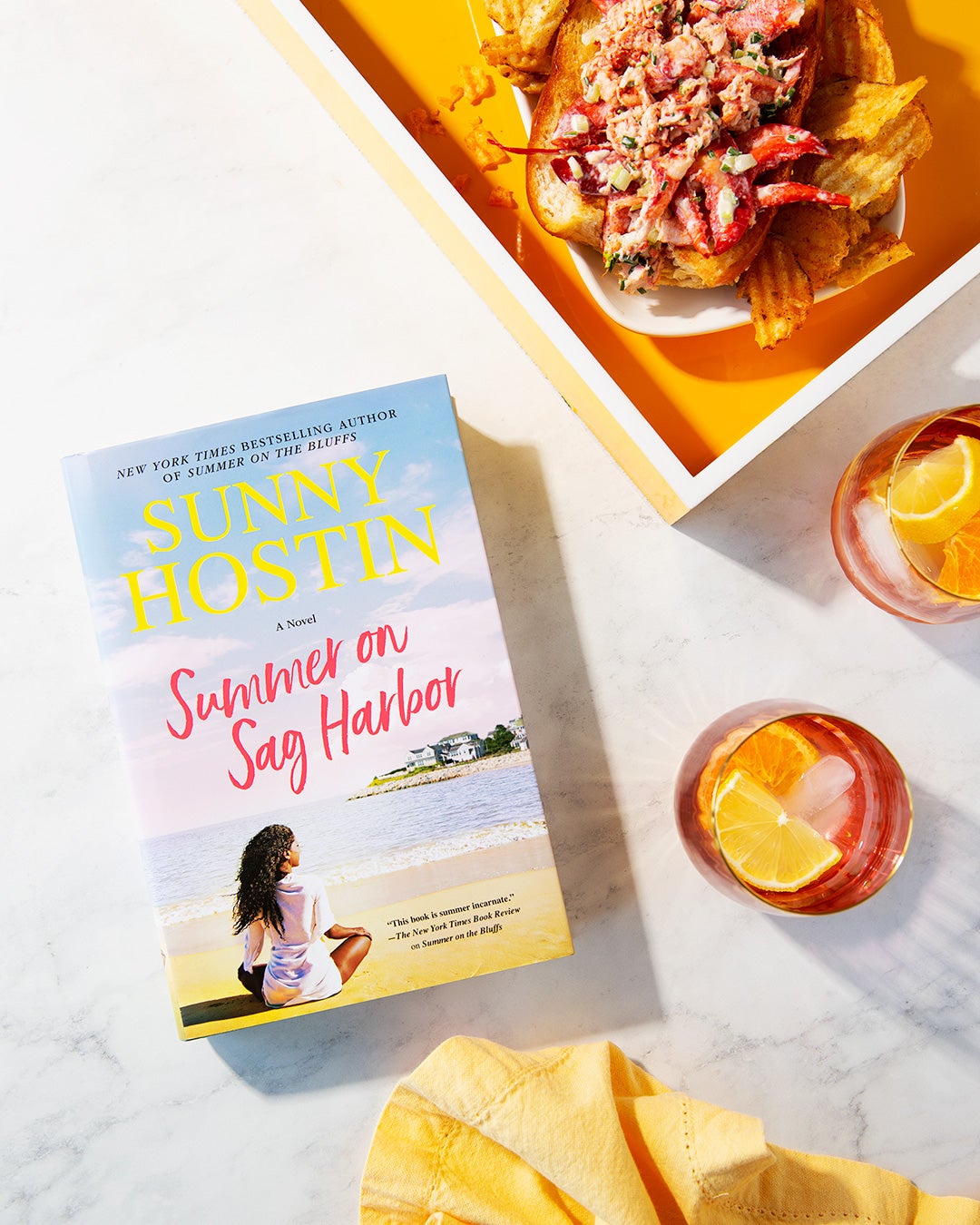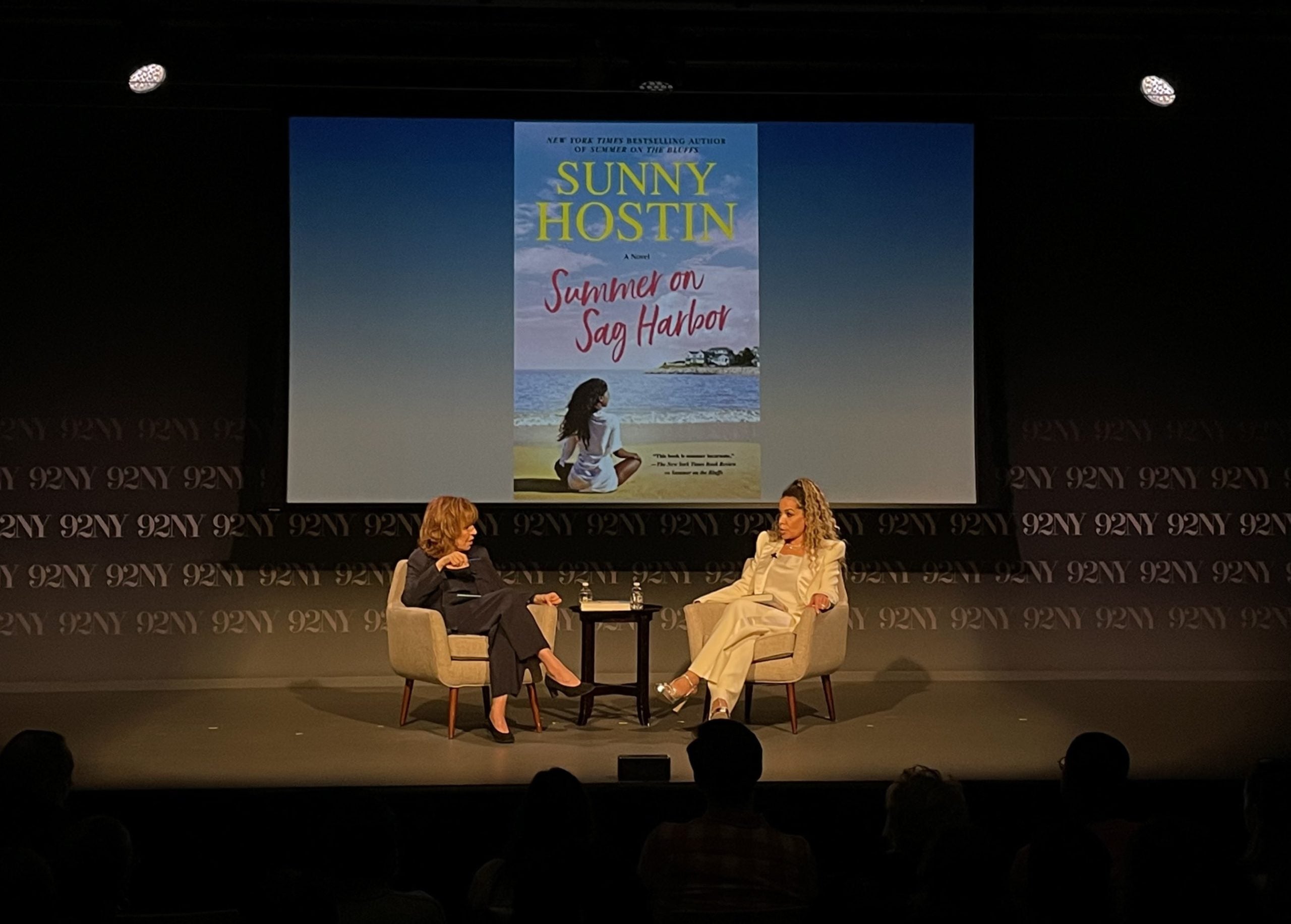
Sunny Hostin wanted a romantic romp to slip in her beach bag. She found shelves full of trauma instead.
“I literally went to a bookstore to try to find a beach read,” she told ESSENCE.
Her days as a host on The View were filled with research on social issues. “There’s a place for that,” she added. “It’s really important. I mean, it’s not like I haven’t read [Isabel Wilkerson’s] Caste. It’s not like I haven’t read all of those books as well to educate myself.”
She needed a palate cleanser, and reality television was not an option. “I’m not in love with the reality stuff,” she said on stage during a discussion at The 92nd Street Y. “They start throwing chairs at each other, and I don’t like that.”
“I think for our mental health as a community, it’s also really important to escape,” she told ESSENCE. “I really wanted something a little lighter but not fluff either. You know? Something more elevated.”
She loved her favorite scribes but longed to hear from a new voice. White women had plenty of Taylor Jenkins Reid and Jennifer Weiner titles to choose from. There was less room on the shelves for what Hostin desired.

“I’d already read Terry McMillan and Terry McMillan and Terry McMillan,” said Hostin. After failing to find sassy, smart stories focused on Black people her frustration became inspiration.
She craved stories celebrating Black culture that would speak to Black issues in a different tone. “I said, if I’m looking for this, then I’m thinking other people will be too,” she continued.
“I love reading fiction, but a lot of the stuff is about Black trauma and, you know, back in the 1600s and 1700s,” she continued. “There’s nothing that contemporary that I’m that interested in reading. And I just thought, ‘I think I’m gonna take a stab at writing something,’ and I put together a proposal.”
That proposal became an “intergenerational” trilogy set in multiple Historically Black Beach communities, also known as “the beachfront properties that Black folks were allowed to buy in the 1800s.”
“You hear about slavery, and then you hear about Juneteenth and emancipation, and then you hear about Jim Crow, and you hear about the reconstruction, but you don’t hear that there was this sort of thriving community,” she continued.
“It’s also really important to know that we have been excellent for a long time,” said Hostin. “There is something called paper genocide where we are just…our accomplishments are erased.”
Summer on The Bluffs (2021), Summer on Sag Harbor (2023), and the upcoming Summer on Highland Beach focus on a family full of intrigue and ambition. They are nestled in neighborhoods often “missing in our history books.”

“I always like those juicy stories with secrets, and I had them actually owning homes in these three places,” she said.
Hostin assumed everyone would get her vision, but the response was stale. Some did not even know that she was planning to write about real places, assuming the wealthy Black people she described were make-believe.
“One publisher was like, does this really exist? Is this real, or is it total fiction?”
The series found a home at HarperCollins in 2021. “Some of the other publishing houses didn’t really get it, if I’m being honest.”
As a South Bronx native, Hostin was not born to summer in the enclaves of the Black elite. The series reflects every perspective, from the insecure newcomer to the seasoned socialites. “I was not born into it,” she said, laughing. “But what I am familiar with is the feeling of not belonging.”
“The first time I went to Sag Harbor, I was already a lawyer. I was already kind of accomplished, but when you walk along the beaches of Sag Harbor, you’re facing generational wealth,” she said.
There are characters in the book comfortable at galas and cotillions, and there are others who have side jobs delivering for Uber Eats. Society wives, entertainers, domestic workers, and moguls, they all have their say on the series’ sandy shores.
“I know what it feels like to not know, ‘okay, well, what do I wear to this? Is this casual, or is this like upscale casual, or how will I be perceived?’ But I had the benefit of people just being kind and wanting people to be in the community, wanting me to be in the community.”

Now she is not just an admirer of Sag Harbor’s legacy. She is a guardian of it. “I’m on the Sag Harbor Homeowners Association, and what’s fascinating to me is that association worked really hard at getting at getting it designated a historically black beachfront community because they wanted people to know that this was the character of the community, that this was a community of Black excellence founded by doctors and lawyers and nurses,” she stated.
“This is our generational wealth.”
Hostin took a scholarly approach to ensure she nailed the dynamics. “I’m an amateur historian,” she said.
Maps, books, and folklore were all helpful in building the world of the trilogy. “With Martha’s Vineyard, I had Our Kind of People, and in many ways, that’s kind of definitive,” she continued. The book, considered by many to be a blueprint of the Black upper class, was written by the late Lawrence Otis Graham, a friend of Hostin’s.
“Larry did a great job. People really need to read that book.” It was just one of her sources. “Of course, I also read The Inkwell. I read everything that I could get my hands on,” Hostin continued.
She poured through images of debutantes, civil rights icons, business pioneers, and medical experts at places like Chicken Bone Beach and Bruce Beach. Learning about how historical figures found community outside of struggle was enlightening.
“[When] you think of Frederick Douglass, you don’t think about him walking on the beach! You think about him as this great abolitionist who did this incredible work for our community. But we play too, and we relax too. And we’ve owned homes in Martha Vineyard since the 1800s,” she said.
“For me, it was, I know this trauma exists, but I know this excellence exists as well because I summer in these places. I have friends that own homes in these places, and I’m gonna write to that.”
She turned to some of those friends to paint accurate pictures of women whipping convertibles while wrapped in Christopher John Rogers and Pucci on the bay of Sag Harbor.
“I thought it was important to go a step further. I have friends that had homes on Martha’s Vineyard for generations, and I would just ask them, can I speak to your grandmother? Is your great-grandmother still alive? Can I speak to her? Can I speak to your parents? And they have these wonderfully rich stories.”

Their philanthropy, wellness practices, and housekeeping preferences of the women who keep places like Back Door Donuts and the Harlem Studio Museum alive are on display in the series.
They do not ignore the challenges of being Black in America but they are not defined by them.
“We have great stories too that are about relationships and family and love and property and the beach and that’s why I think the first book sold over 20,000 copies the first week,” said Hostin.
“Although I was blown away by it, I wasn’t surprised that there was a thirst for it.”
Hostin’s slot at television’s most visible table helped her gain access to treasured memories. “Is it easier to get an audience with these people when you’re on The View? Yes.”
Fame also put her in a position to get great advice. Her co-host Joy Behar advised her to add more sex to the story, a must for any successful beach read.
She took on the challenge by giving the steamiest love scenes to the series matriarch. “I also wanted to show a woman in her sixties finding love again. I feel like so many books deal with twenty-somethings and teens, but very few deal with multi-generations.”
The spice contributed to the series flying off shelves. It recently gained an adaptation deal with a streaming service.
Hostin plans to use her privileged position as a best-selling author to help other writers tell stories that defy stereotypes. “I feel like everybody has a story, and to be able to give other people the opportunity to be heard, it would be amazing.”
Summer on The Bluffs and Summer on Sag Harbor are now available wherever books are sold.





